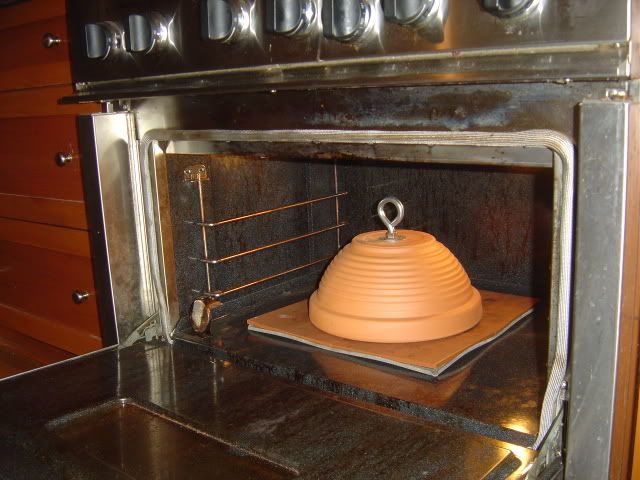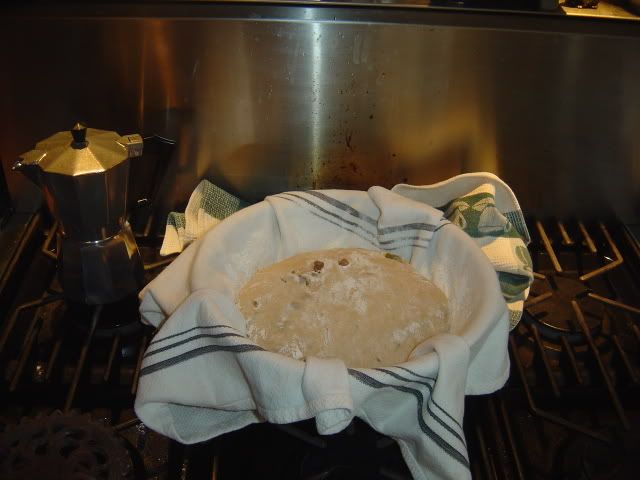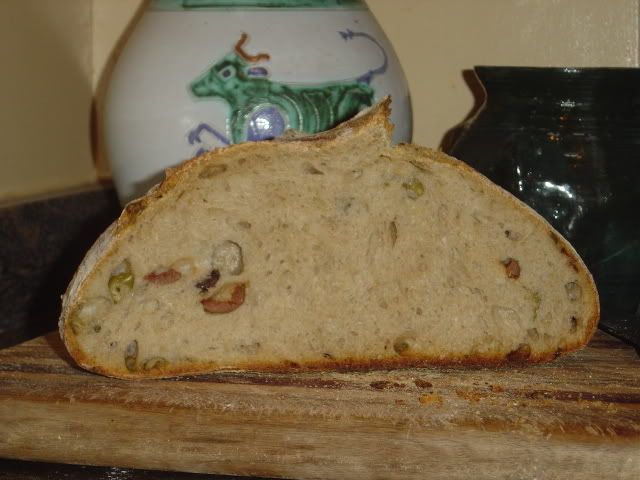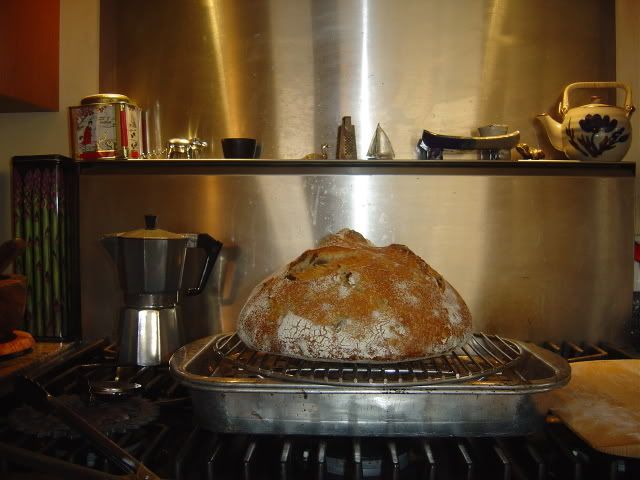
I've been making Sourdough breads for a couple months now from a culture I started myself with water and unbleached flour. The original inspiration and methodology came from OUTLAW COOK by John Thorne. There are two great bread chapters in the book: An Artisanal Loaf and One Loaf Three Ways. The former explores the mystery and delight of making bread from nature, the latter gives practical instruction. Since then I have scoured every sourdough entry Google could locate and have gotten great ideas from the many excellent bread makers who have shared their art and technique. I've had some ups and downs as most people do. My goal is craggy, flavorful, crusty artisanal loaves. No bread pans for me! Initially I wasn't getting the loft in the bread-- they weren't door stoppers-- just not as airy as I would have liked. But the biggest failing in my mind was the lack of dramatic bloom and crests where i had slashed the bread. I've solved those issues with this bread which is 1/5 whole wheat flour. My next effort will be with all white bread flour.
Here is my set up: Flower pot cloche on unglazed tiles

The recipe:
Rosemary Olive Sourdough Boule
1 ½ Cs activated 100% hydration SD starter (retarded overnight and brought to room temp)
1 2/3 Cs water
1 C WW flour
3 ½ Cs Bread Flour
1 T dried Rosemary softened in 1 T olive oil
1 C Brine cured olives pitted, roughly chopped and oven dried at 275 for about an hour.
1 1/2 t sea salt
Put activated starter, WW flour, olive oil/ rosemary and water in large bowl (I use kitchen Aid mixer). Mix on low with paddle until well blended. With mixer on lowest setting, add bread flour 1 tablespoon at a time until a dough begins to form. Using rubber spatula, scrape dough off paddle and exchange for dough hook. Turn on lowest setting with dough hook and continue adding flour 1 tablespoon at a time while scraping down side of bowl so the dough begins to form into a ball. After each addition of flour, the dough will come together away from the bowl and become dry on the outside. Then as the flour is incorporated, the dough will start to sag again, appear wetter and stick to the bowl. As this happens, add more flour. Throughout this process, use the rubber spatula to scrape down the sides of the bowl and encourage all the dough to stick together. This should take around 4-5 minutes. Once you have a smooth but still somewhat sticky dough, flour your surface and hands and turn/ scrape the dough out for hand kneading.
Hand knead incorporating flour as needed until you have a classic bread dough. 2-4 minutes more.
Set aside covered in a lightly oiled bowl for 20 minutes.
Turn out again onto floured surface and shape into a rough square. Sprinkle 2/3 of the salt on the dough, fold in half and sprinkle remaining salt. Fold over and knead for another 1-2 minutes until salt is evenly distributed.
Put back into oiled bowl, cover tightly with plastic wrap and set aside to rise. 4-6 hours.
Turn out onto floured surface, spread out into rough square, sprinkle olives all over, fold and knead until olives are well distributed. Shape into Boule and place top down into floured banneton. Place banneton inside a plastic garbage liner (white kind only) or other plastic bag and place in the fridge for overnight retardation.
Remove from fridge and allow 3-5 hours to proof. Preheat oven, tiles and cloche to 500,
Turn bread onto corn meal dusted peel, slash top and slide onto tiles and cover with cloche. Bake 45 mins: 15 mins at 500, 15 mins at 400, final 15 mins uncovered to brown.
Peeking while it rises, 2 hours out of the fridge, 2 hours before baking (a finger poked 1/2 inch into the dough springs back quickly)

Loft:

Crumb:

Yum:
